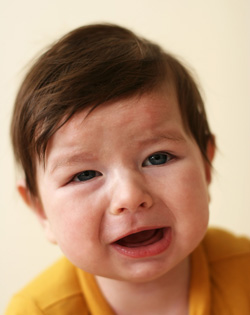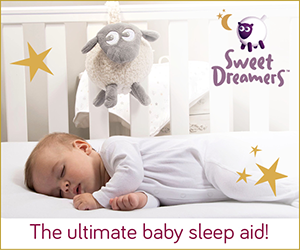Ear Infections

Although ear infections are common, they are not a normal, healthy part of childhood. They are not a rite of passage that your child has to suffer through. Seventy-five percent of Canadian children will have at least one ear infection by the time they reach one year old. This is a staggering number of children and the number of kids affected by acute and chronic ear infections continues to rise. Have you ever given thought to what actually causes an ear infection? How about the causes or triggers for recurrent ear infections? The answers may surprise you, yet they may give you some ideas of how to decrease your child’s risks for infections and to ease the misery and suffering for your sick child. Most infections clear up without the use of antibiotics. However you may want alternative options to speed recovery, make your child more comfortable while they are sick, and to prevent further episodes.
What Causes Ear Infections?
A middle ear infection, or acute otitis media (AOM), is caused either by a bacterial or viral infection. Often this infection starts in the upper respiratory tract as a cold or flu virus and moves to the middle ear causing inflammation and pain. Infants and small
children are very susceptible to ear infections as their Eustachian tubes (the tubes that connect the middle ear to the throat), are short, horizontal, and floppy.
This is one of the main reasons why adults do not frequently get ear infections, despite frequent colds and flus. The Eustachian tube matures by six to seven years of age making it an effective barrier to microorganism migration into the ear, and one of the primary reasons why older children do not often get ear infections.
Risk Factors
There are two sets of risk factors; those you can avoid or modify and those which you have little to no control over.
Modifiable factors
1. Bottle feeding
• Bottlefed babies tend to be held while eating in a more horizontal position, allowing fluid to pool in the middle ear. This provides a breeding ground for microorganisms.
• Build up of negative pressure during feeding if using a non or unvented bottle. Negative pressure builds inside the bottle causes the infant to suck excessively. This creates a negative pressure inside the mouth that can be transmitted to the middle ear. Using a ventilated bottle creates positive pressure, much like that created during breastfeeding.
2. Exposure to cigarette smoke.
3. Pacifier use in children less than three years old. This increases risk for recurrent infections by 25%.
Non-modifiable risk factors
1. Male gender.
2. Atopic history (i.e. personal or family history of eczema, allergy, or asthma).
3. Upper respiratory tract infection (URTI).
4. Age. Peak incidence in children aged six to 11 months of age.
5. Attendance at daycare. Ask about the policy and procedures on encouraging proper hygiene in each child and on cleaning the toys and immediate environmental surroundings.
An important protective factor
Exclusive breastfeeding for at least three months reduces the incidence of AOM. Breastmilk contains many immune protective factors (e.g. lactoferrin, oligosaccharide, and surface immunoglobin A) that formula cannot duplicate. Breastfeeding not only protects against AOM but against most childhood illnesses and diseases. A prospective study comparing the frequency of episodes of AOM among breastfed children, breastfed and formula-fed children, and formula-fed children showed there was a significantly lower incidence of AOM in breastfed children compared to formula-fed children (13% vs. 62%).
Diet Triggers
For a single ear infection it is unlikely that there is a single dietary cause. However, for children with recurrent ear infections, a dietary culprit must be investigated. A food allergy or intolerance to several foods should be considered for the child with repeated ear infections. Cow’s dairy products including fluid milk, cheese, and yogurt is the most common cause of recurrent ear infections.
Dairy is on the top of the list of most common allergens; it is very mucus forming and congesting and should be avoided for a minimum of four to eight weeks to see whether the child responds favourably. Other food intolerances to consider for recurrent ear infections include wheat, sugar, soy, eggs, corn, peanuts and tree nuts.
Refined sugars in processed and packaged foods should be avoided as well. Sugar impairs the immune system and allows bad
bacteria and viruses to take over when the immune system is down. Even very small amounts of sugar decrease immune functioning for several hours at a time. Read food labels carefully for hidden sugars especially in children’s cereal, cookies, beverages and packaged treats. Sweeten foods if necessary using natural sweeteners including honey, molasses, agave, stevia, dates and fruits.
Current Medical Approach
There is a large difference that exists between the published medical standards of practice, as outlined in position papers and public statements, and what doctors are actually practicing in the office.
As quoted from the Canadian Pediatric Society position statement on AOM: “For otherwise healthy children older than six months of age with no craniofacial abnormalities who have mild clinical signs and symptoms, a watchful waiting approach for 48 h to 72 h is an option if follow-up can be assured.” Does your family physician follow this position? Is s/he willing to wait before scribbling down a script for you to fill? Doctors are also responsible for patient education and the position statement proceeds to say that, “parents should be educated about the factors that may increase the risk of AOM in their children.” Does your doctor take the time to outline the risk factors and educate you about how to avoid future AOM?
The bottom line? Most infections will resolve spontaneously without an antibiotic. Many children will improve within three days and most will return to health in five days. In children without high fever and vomiting, there is no benefit of administering antibiotics immediately. It is in the watchful waiting period that naturopathic medicine is able to kill the infection, manage symptoms, and speed recovery.
Naturopathic Treatment Options
The goal behind treatment is to treat the existing infection and support the immune system to prevent future infections. It is important to identify and eliminate any food intolerances or allergies. As mentioned above, it is worth doing a trial of food elimination to see if your child responds positively to dietary changes.
Many herbs are available that are safe for small children and that work on both bacterial and viral infections. Antibiotics only work on bacterial infections so they may be ineffective if your child’s ear infection is of a viral nature. Echinacea, goldenseal, and garlic are a few examples of herbs effective in killing unwanted microorganisms. Treatments with onion ear poultices are effective at reducing pain and warming socks help to drain fluid in the ear and any congestion in the head. To support the immune system in both an acute and chronic situation, probiotics should be taken on a daily basis. Over 70% of our immune system is made up of good bacteria and many children have risk factors for dysbiosis, or imbalanced gut microflora.
Homeopathics work very well at managing symptoms but you need to consult with a qualified practitioner to choose a remedy specific for your child’s symptoms.
Ear infections are a common occurrence for many Canadian children. AOM in a normally healthy child can be managed safely and
effectively without the use of antibiotics. In fact, the ear infection will most likely resolve on its own in three to five days without any treatment at all and without any long lasting or permanent consequences. However, there are many treatments available to help you help your child remain comfortable while treating the infection. Even though herbs, probiotics, and supplements are natural they are still medicines and should not be considered safe for anyone and everyone to use. To receive maximum benefit in a safe, gentle way consult with a qualified health care practitioner.
Dr. Carly Wendler is a licensed Naturopathic Doctor with a special interest and passion for perinatal health. She offers a range of naturopathic services to her community and patients including well pregnancy visits, well baby visits, and treatment for all conditions or concerns related to moms, babies, and families. Visit www.drcarlywendler.com and www.wvchirogroup.ca.




